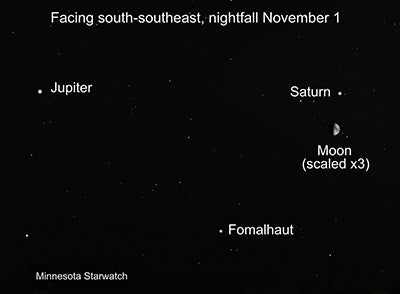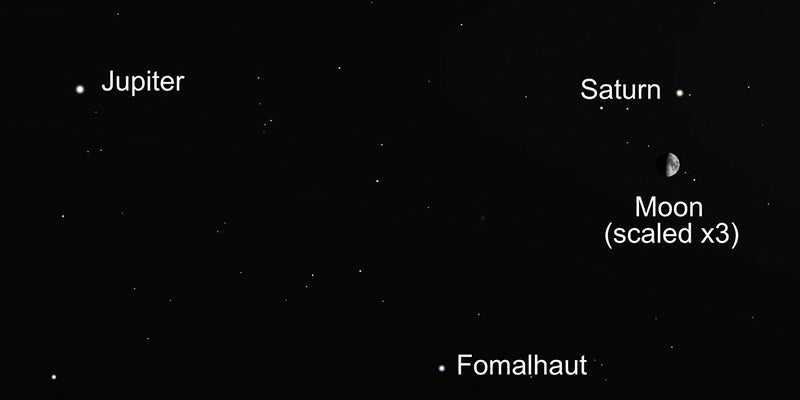Minnesota StarWatch: November hosts a lively night sky
Published 4:57 pm Tuesday, November 8, 2022
|
Getting your Trinity Audio player ready...
|
By Deane Morrison
As night fell on Nov. 1, a just-past-first-quarter moon hangs below Saturn, with brilliant Jupiter off to the east. The moon continued to wax as it glided between the two planets on the 2nd and 3rd and below Jupiter on the 4th.
Between and well below the planets shines Fomalhaut, dubbed the “loneliest star” due to being located nowhere near any other bright stars. Fomalhaut represents the mouth of Piscis Austrinus, the southern fish, an extremely dim constellation.
 November’s full moon underwent a total eclipse in the early hours of the 8th.
November’s full moon underwent a total eclipse in the early hours of the 8th.
As the moon darkens, the bright winter stars come into their full glory, complete with special guest Mars. The Pleiades star cluster glimmers above the moon, and Aldebaran, the eye of Taurus, the bull, shines to the east of the Pleiades. Aldebaran and Betelgeuse—at Orion’s right shoulder—form a nearly equilateral triangle with Mars; the red planet will be the highest of the three.
Mars rises in the northeast about two and and a half hours after sunset on the 1st and appears earlier every evening. This is a great month to watch Mars, not only because it’s rising in convenient evening hours but because it’s rapidly brightening as Earth gains on it in the orbital race. Mars reaches its peak brightness in early December, when Earth finally catches up to it.
The Leonid meteor shower peaks after midnight on the mornings of the 17th to 19th. This can be an exciting shower; however, for most of this year’s show a waning but still bright moon will interfere.
The University of Minnesota’s public viewings of the night sky at its Duluth and Twin Cities campuses have been curtailed due to the COVID-19 pandemic. For more information, see:
• Duluth, Marshall W. Alworth Planetarium: www.d.umn.edu/planet
• Twin Cities, Minnesota Institute for Astrophysics: www.astro.umn.edu/outreach/pubnight
• Check out astronomy programs, free telescope events, and planetarium shows at the
• University of Minnesota’s Bell Museum: www.bellmuseum.umn.edu/astronomy
Find U of M astronomers and links to the world of astronomy at: http://www.astro.umn.edu



